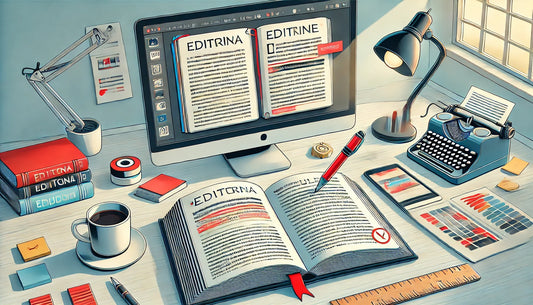
Editorial and Writing Rules
The contents provided with the editorial rules already applied and verified allows a more effective work of editing and layout. It is one of the conditions to have high quality products at a low production cost.
Material format
Provide material in Word, Open Office, Pages, Indesign, X-press formats, in any version, or in other word processing programs, even for rare or obsolete systems: Amiga, Apple, PC, Linux, even before the 90s.
Format chapters, paragraphs, sub-paragraphs
In Word: set chapters with the "Heading 1" style; paragraphs with "Heading 2", etc.
In Open Office: set chapters to "Heading 1" style; paragraphs to "Heading 2", etc.
Text styles and punctuation
- Use bold or italics only when absolutely necessary, never to indicate a sub-paragraph or section (always use styles as indicated above).
- Use italics when you have to write a text in the original language in the text and indicate its translation into Italian in a note.
- Use double quotes "" when opening and closing a dialogue, statement, or exclamation, not the symbols << >>.
- Tabs are deprecated as are whitespace to align text or parts of text.
- Check that there are no double spaces between words and/or punctuation.
- Do not apply text alignment, i.e. neither justification nor centered or right alignment: leave the text aligned to the left.
- Do not apply hyphenation.
- After each punctuation symbol such as ; , : . " always leave a blank space (when there is text following).
- Apply underline only when it is a link.
- If there are links, always indicate "https://" in the link where the text should point.
Image format
For both the cover image and the images within the text (whether they are images, photos, tables or graphs):
- always and only in single files: that is, not integrated into the Word or Open Office file, but in a separate folder (even compressed is fine).
- PNG or JPG format with 100% compression (i.e. with no compression and larger file, but higher quality).
- maximum dimensions: the long side at 1400 pixels.
- resolution 250 dpi.
- color: RGB.
- image filename without spaces, accented letters or symbols, if possible less than 20 characters. Example: not "foto cinéma de demain piccolo 30%.jpg" but "foto_cinema_demain_picc_30.jpg".
Image captions, photos, tables, graphs
Insert the captions into the original Word/Open Office/Indesign file, indicating the file name of the corresponding image, photo, table or graph.
Example:
(...) Lorem ipsum dolor sit amet, consectetur adipiscing elit. Sed pellentesque sollicitudin quam, eget ullamcorper eros laoreet in. Maecenas fringilla, nulla non fermentum pharetra, turpis dui facilisis urna, ut interdum magna dui accumsan turpis.
photo_theatre_la_scala.jpg
caption: Integer porta lobortis augue sed placerat. Praesent facilesis purus sit amet neque sodales faucibus. Aenean mattis commodo tellus a elementum. Donec fermentum interdum porttitor. Maecenas feugiat ligula et purus iaculis laoreet. (...).
Footnotes
- Turn footnotes into endnotes (there is a command in both Word and Open Office that automatically moves them)
- Remove all notes that refer to page numbers in the text itself, replacing the page number with the name and/or number of the paragraph.
- ALWAYS put a dot "." at the end of each note.
Grammar rules
Euphonic "D": the forms "ed erano...", "ad loro...." are deprecated.
The rule is: never add a "d" if the vowel at the end and beginning of the words is different.
That is, "and they had..." must be "and they had" and "and they..." remains "and they...".
This applies to:
ed -> a...; ed -> or...; ed -> i...; ed -> u...
ad -> e...; ad -> or...; ad -> i...; ad -> u...
The only exceptions: "for example..." remains "for example..."
Blank spaces and tabs
Remove all double blank spaces by replacing them with a single blank space (using search/replace)
Remove all tabs: for any indents, use paragraph or title styles.
Hyphenation
Turn off automatic hyphenation and correct any manual hyphenation
Bibliographic citations
Using the standard:
Anna Dolfi, Giacomo Di Stefano, The New Journal of Oriental Studies, Florence, La Nuova Italia, 1976.
Umberto F. Giannone, Virtue in the Decameron and in the works of Boccaccio, Milan, Ricciardi, 1974.
Avoid different styles for author or title.



